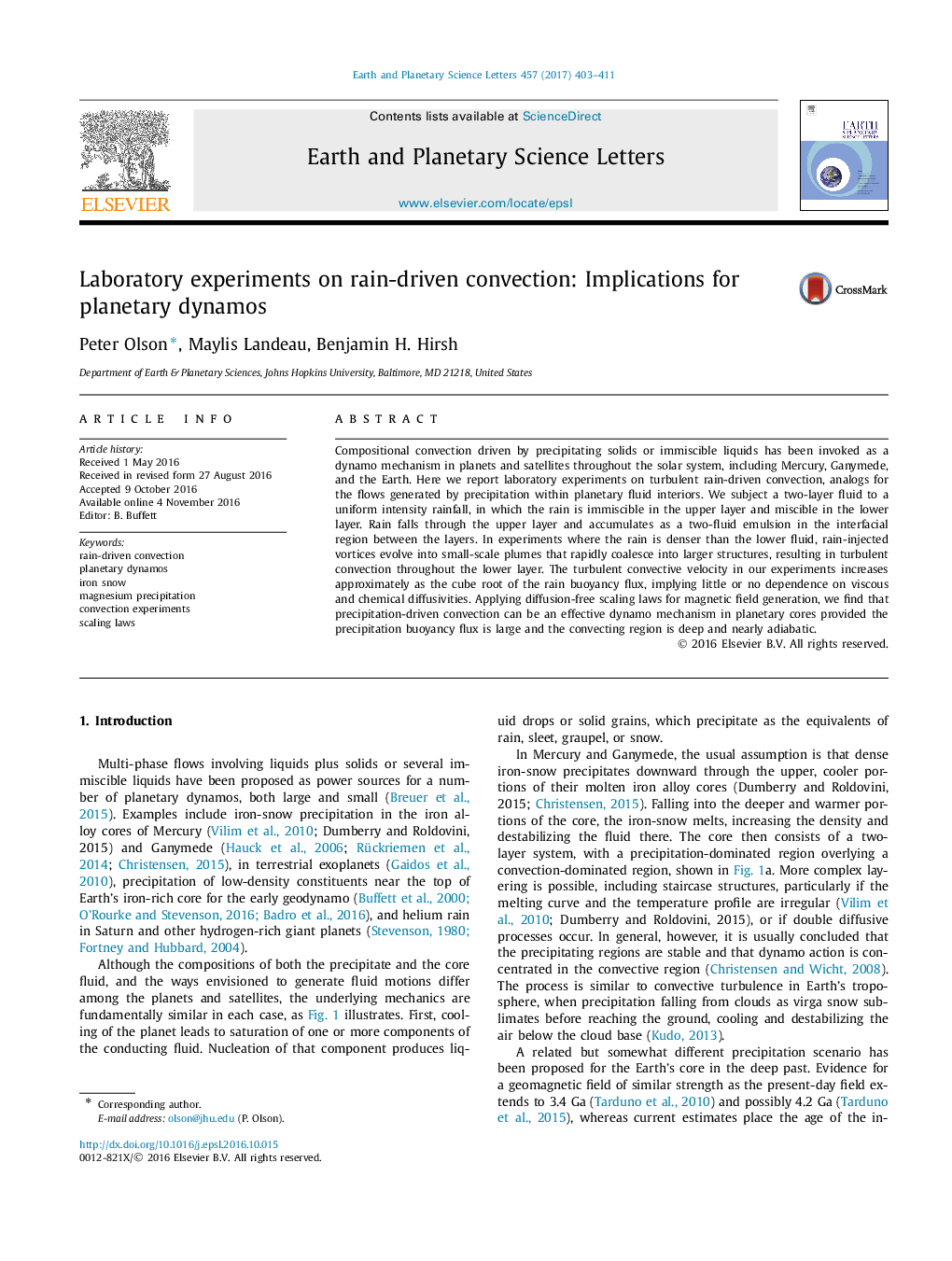| Article ID | Journal | Published Year | Pages | File Type |
|---|---|---|---|---|
| 5780079 | Earth and Planetary Science Letters | 2017 | 9 Pages |
Abstract
Compositional convection driven by precipitating solids or immiscible liquids has been invoked as a dynamo mechanism in planets and satellites throughout the solar system, including Mercury, Ganymede, and the Earth. Here we report laboratory experiments on turbulent rain-driven convection, analogs for the flows generated by precipitation within planetary fluid interiors. We subject a two-layer fluid to a uniform intensity rainfall, in which the rain is immiscible in the upper layer and miscible in the lower layer. Rain falls through the upper layer and accumulates as a two-fluid emulsion in the interfacial region between the layers. In experiments where the rain is denser than the lower fluid, rain-injected vortices evolve into small-scale plumes that rapidly coalesce into larger structures, resulting in turbulent convection throughout the lower layer. The turbulent convective velocity in our experiments increases approximately as the cube root of the rain buoyancy flux, implying little or no dependence on viscous and chemical diffusivities. Applying diffusion-free scaling laws for magnetic field generation, we find that precipitation-driven convection can be an effective dynamo mechanism in planetary cores provided the precipitation buoyancy flux is large and the convecting region is deep and nearly adiabatic.
Keywords
Related Topics
Physical Sciences and Engineering
Earth and Planetary Sciences
Earth and Planetary Sciences (General)
Authors
Peter Olson, Maylis Landeau, Benjamin H. Hirsh,
